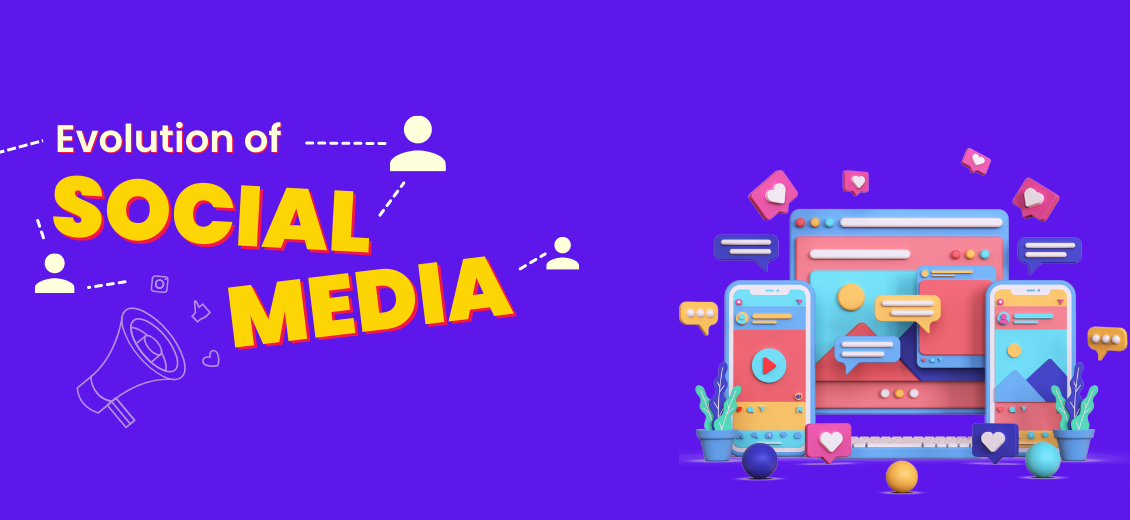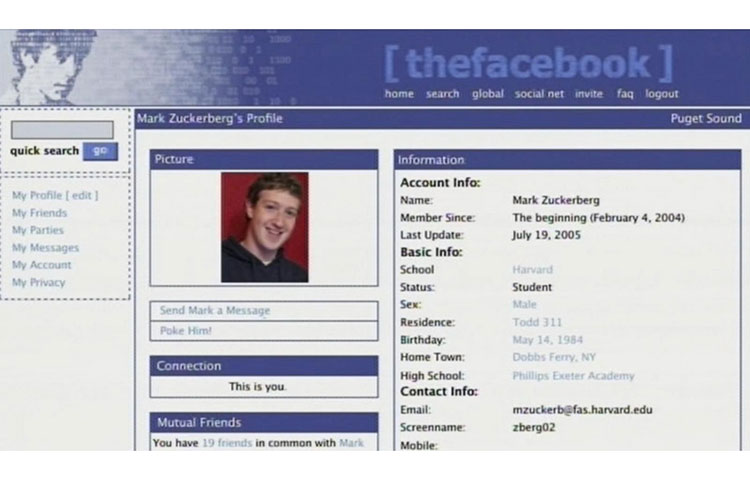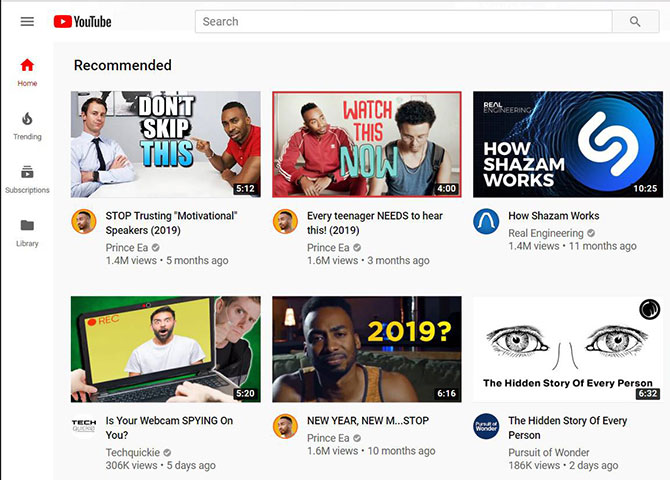Evolution of Social Media – Its Inception and Metamorphosis
Blogs Home
- 28 Jul 2022

Introduction
Social media has become so integral a part of the daily lives of urbanites that it’s hard to imagine a day without it. As much as some of us may take the occasional "social media detox" or attempt to avoid it altogether, there’s no denying its growth and influence on modern lifestyle.
From young to old, individuals to businesses, social media platforms are no longer confined to certain demographics. For most of us, it’s a source of information, a means to social connection, a space for individual expression, or even a call to activism; while for others, it may be their bread and butter.
When referring to social media platforms, Facebook, Instagram, Twitter, and most recently, TikTok often comes to mind. But these platforms wouldn’t be where they are if the pioneers of the industry hadn’t first paved the way, and no, Friendster is not being referred to here.
Read on to know from where it all began…
Evolution of Social Media
SixDegrees (1997)
Founded in 1997 by Andrew Weinreich, SixDegrees is widely attributed as the first successful predecessor to modern-day social networking sites. It was named after the six degrees of separation concept and adopted the “social-circles network model”, much like Facebook. This meant that users could send messages and post bulletin board items to people in their first, second, and third degrees while checking their connection to other users on the site. There were about 3.5 million registered members before it shut down in the year 2000.
Friendster (2002)
Before Facebook came along, Friendster was arguably the most popular social networking site. Even though initially based in California, Friendster was later headquartered in Kuala Lumpur.
Created by Peter Chin, Jonathan Abrams, and Dave Lee in 2002, the site allows users to share videos, photos, messages, and comments with other members via profiles (friends) and networks. It was also used for dating, gaming, and discovering new events. Sadly, it was suspended in 2015 following “the evolving landscape” in the “challenging industry” as well as a lack of engagement within the community.
MySpace (2003)
MySpace took over Friendster as the largest social networking site in the world from 2005 to 2008. It was founded by a group of employees from the Internet marketing firm eUniverse, which held contests to see who could sign up the most users - a key to its rapid growth. Unlike Friendster, Myspace enabled users to customise public profiles, embed video and music, and exchange messages with other users instantly. Despite its gradual decline in popularity after 2008, the website is still alive today, though it has transitioned from a social networking site into a curated music and entertainment site.
LinkedIn (2003)
Known as the social media platform for professionals, LinkedIn offers users a place to share their resumes and work experiences to connect with businesses and like-minded users. It’s now common for employers to scout for talents and for users to search for jobs through LinkedIn, with over 740 million members on the platform. The platform also offers skills training, publishing tools, polls, stories, as well as additional features for paid premium accounts.
Facebook (2004)
Since its launch in 2004, Facebook has climbed the ranks to become the largest social media giant to date. What started as a Harvard-only club quickly gained traction to now boast over 2.5 billion monthly active users. Initially, Facebook users were limited to sharing texts and multimedia on their feed or via messaging (now known as Facebook Messenger). Then came the Like button, as well as additional features and tools for advertising and businesses, such as Facebook Pages, Facebook Business Manager, and Facebook Marketplace. However, the platform may be facing challenges ahead as more younger users drop out in favour of newer generation platforms including Instagram and TikTok.
YouTube (2005)
YouTube went live in 2005 and remains the undisputed king of online video until today. YouTube is an American online video sharing and social media platform headquartered in San Bruno, California. It was launched on February 14, 2005, by Steve Chen, Chad Hurley, and Jawed Karim. It is owned by Google, and is the second most visited website, after Google Search. YouTube has more than 2.5 billion monthly users who collectively watch more than one billion hours of videos each day. As of May 2019, videos were being uploaded at a rate of more than 500 hours of content per minute.
While it may be considered a social media platform thanks to features like comments, polls, and community posts, it's more widely regarded as a video-sharing platform. Many use the platform purely to watch videos and/or share them on other sites like Facebook, rather than "socialising" or interacting with other users.
Reddit (2005)
The idea and initial development of Reddit were done by college roommates Steve Huffman and Alexis Ohanian in 2005. Reddit launched two different ways of advertising on the site in 2009. The company launched sponsored content and a self-serve ads platform that year. Reddit launched its Reddit Gold benefits program in July 2010, which offered new features to editors and created a new revenue stream for the business that did not rely on banner ads.
Reddit is a website comprising user-generated content—including photos, videos, links, and text-based posts—and discussions of this content in what is essentially a bulletin board system. The name "Reddit" is a play-on-words with the phrase "read it", i..e., "I read it on Reddit." According to Reddit, in 2019, there were approximately 430 million monthly users, who are known as "Redditors". The site's content is divided into categories or communities known on-site as "subreddits", of which there are more than 138,000 active communities.
Twitter (2006)
Founded by Jack Dorsey, Evan Williams, and Biz Stone in 2006, Twitter (originally named Twttr) is a microblogging social media platform that allows users to post and interact with messages called “tweets”. Dorsey initially envisioned the platform as a text message-based tool for sending updates between friends, but it naturally turned into “the SMS of the Internet”—aka an outlet for headlines and bite-sized content. One Twitter user by the name of Chris Messina went on to invent the now-omnipresent hashtag back in 2007, birthing the concept of tagging that’s used across multiple platforms (and oddly, daily conversations) today.
Instagram (2010)
After Facebook and YouTube, Instagram is the third most popular social network (excluding messaging apps like WhatsApp and Messenger) with 1.28 billion active monthly users. It was launched as a mobile photo-sharing social media platform in 2010, allowing users to share only square photos with optional filters on their profiles. It hit one million users within two months and was acquired by Facebook in 2012 for $1 billion.
As challengers like Snapchat and TikTok came into the picture, Instagram began rolling out features such as Video, Stories, Carousel, IGTV, Reels, and Shops to stay competitive. With plans to introduce new ad types every year, it is becoming an increasingly popular platform for following and connecting with brands and influencers.
Snapchat (2011)
Stanford University students Evan Spiegel, Bobby Murphy, and Reggie Brown launched Snapchat in 2011, introducing the concept of serial photos and/or videos, known as “stories”. It also popularised filters beginning in 2015, causing users to go crazy for animal ears and rainbow puke. In 2016, it rebranded to Snap Inc, the parent company of Snapchat and Spectacles, a pair of smart glasses designed for augmented reality. Despite growing competition, the platform has managed to maintain steady growth by introducing new features such as short-form Shows and Spotlight. As of 2021, it records over 500 million active monthly users.
Clubhouse (2020)
Clubhouse is the latest social media platform to join the club. Debuting for iOS only in 2020, amid global lockdowns, Clubhouse is an invitation-only audio-based social media app that allows users to communicate in voice chat rooms where they can host or join discussions with people around the globe, or chat with friends in private. It drew waves of users after celebrities and entrepreneurs like Oprah Winfrey, Drake, and Elon Musk voiced their approval for the app, especially in the first quarter of 2021. Ironically, by the time it became available to Android users around May this year, downloads and interest seem to be tapering off. Nevertheless, existing users are reportedly still using the app, with about 10 million active users weekly.
Beyond 2021
Whichever social media platform(s) you’re currently using, the rapid changes we’ve seen over the past two decades show that they will only continue to evolve. With e-commerce, virtual reality, augmented reality, and digital marketing also maturing in tandem, it’s likely we’ll see more developments in those areas in the near future.
Social Media – The Future
What will happen to social media in the future can only be predicted by technological advancement. These social media platforms will more likely evolve, leaving these features behind for
of their users? How will the end-users of these platforms adapt to the new changes? How will businesses meet their needs and build up new audiences?
Answers to the above-mentioned questions will determine the new path for social media and will predict its future.
According to some research, the end-users of social media platforms such as those mentioned above will lean towards services that will meet their following needs;
- More personalized content for everyone
- Less critical as well as conflict on social media feeds
- Protection of privacy but more focused
- Enhanced UX design with more focus on cell phones
- Focused more on community building rather than segregation
All of these needs and wants of the end-user should be met to predict the true future of social media. This would mean that these platforms might start offering paid subscriptions and premium tools. The real challenge will be for marketers, who will have to bear the pain of the shift in demand of their potential customers.
What’s Next for Social Media?
Future is only limited to one’s imagination. Although the history of social media has been brief, it has told its tale. Rapid changes in the demand, advancements in technology, soaring financial demands in the market, and the change in the culture will define and transform the overall condition of the social media landscape.
Will Facebook, Instagram, Twitter, and numerous other social media giants follow the footsteps of their predecessors such as Myspace and Orkut, or will they soar higher than ever? Can social media evolve itself, or is it at its primal age? The answers to these questions lie in the vault of time.
Humans are social beings. Communication and commerce are both driven only through interaction. Both of these facts will be the cornerstones in shaping the future and evolution of social media in the future and beyond.

Riya
Riya is currently an undergraduate who completed her BA honours in Pol science from the University of Delhi. Currently, she is into perspective sketching and Creative content writing. She aspires to grow in the same field.
Blogs Home














